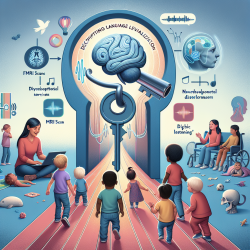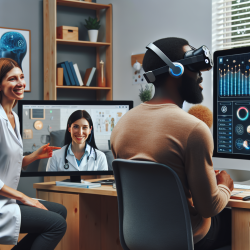Introduction
In the realm of pediatric speech-language pathology, understanding the intricacies of language lateralization is crucial, especially for children with intractable epilepsy. A recent study titled Presurgical language lateralization assessment by fMRI and dichotic listening of pediatric patients with intractable epilepsy offers valuable insights that can enhance clinical practices and outcomes. This blog delves into the study's findings and explores how practitioners can apply these insights to improve their therapeutic approaches.
The Study's Core Findings
The study conducted by Norrelgen et al. (2015) assessed language lateralization in 19 pediatric patients using a combination of functional MRI (fMRI) and dichotic listening (DL). The researchers aimed to determine hemispheric language dominance, a critical factor in planning epilepsy surgery. Key findings include:
- 74% of the subjects had conclusive results regarding hemispheric language dominance.
- fMRI assessments were conclusive in 68% of cases, while DL assessments were conclusive in 89%.
- Combining fMRI and DL data enhanced the accuracy of language lateralization assessments.
Implications for Practitioners
For speech-language pathologists, these findings underscore the importance of integrating multiple assessment tools to gain a comprehensive understanding of language lateralization. Here are some practical steps practitioners can take:
1. Embrace Multimodal Assessments
Incorporate both fMRI and DL in your assessment protocols. The study demonstrates that using both methods can provide a more complete picture of a child's language processing capabilities.
2. Tailor Interventions Based on Lateralization
Understanding whether a child has left or right hemispheric dominance can guide the development of targeted therapy interventions, potentially improving speech and language outcomes.
3. Consider Neurodevelopmental Contexts
Recognize that co-morbid neurodevelopmental disorders, such as ADHD or ASD, may influence assessment outcomes. Tailor your approach to accommodate these factors.
Encouraging Further Research
While the study's results are promising, the authors note that more research is needed to fully validate the clinical applicability of combining fMRI and DL assessments. Practitioners are encouraged to contribute to this growing body of research by:
- Conducting longitudinal studies to track language development post-assessment.
- Exploring the impact of early intervention based on lateralization findings.
- Collaborating with interdisciplinary teams to refine assessment protocols.
Conclusion
By integrating the insights from this study into clinical practice, speech-language pathologists can enhance their ability to assess and treat language disorders in children with epilepsy. The use of fMRI and DL not only provides a clearer understanding of language lateralization but also empowers practitioners to make data-driven decisions that can significantly impact a child's communication abilities.
To read the original research paper, please follow this link: Presurgical language lateralization assessment by fMRI and dichotic listening of pediatric patients with intractable epilepsy.










